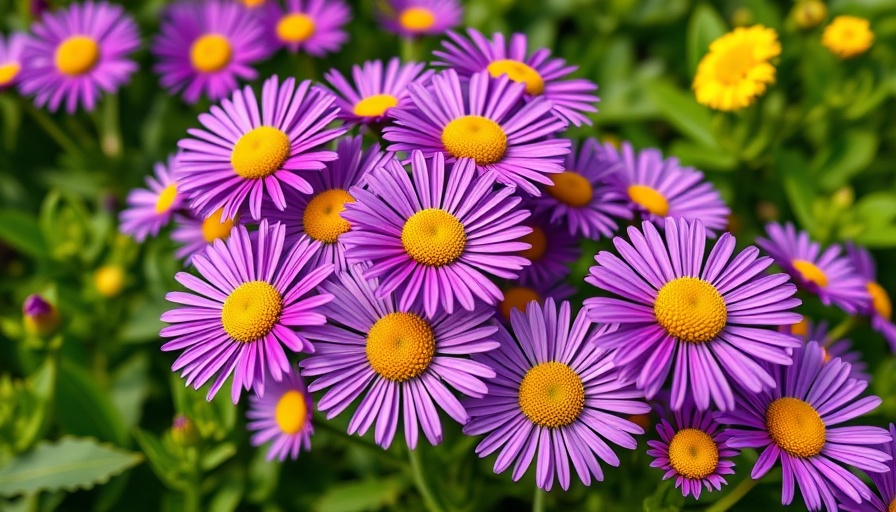
Unlocking the Beauty of New York Asters: Your Comprehensive Guide
As summer fades and the crisp air of fall begins to settle in, the vibrant blooms of New York asters (Symphyotrichum novi-belgii) emerge as nature's final flourish of color. Often referred to as Michaelmas daisies, these stunning perennials add a burst of lavender, purple, and pink to your garden canvas. Understanding their unique care needs is essential for both novice and experienced gardeners.
Get Acquainted with New York Asters
The New York aster, native to eastern North America, is not just a pretty face. This perennial plant is characterized by its rich array of flowers that bloom around the feast day of Saint Michael, making it a symbol of late-summer beauty. It's important to note that New York asters thrive in full sun, requiring a moderate level of soil moisture to flourish, ideally in USDA zones 4 through 8.
Planting the Aster: Start Your Journey
When planning to plant New York asters, timing and location are crucial. Aim to plant these beauties in well-draining soil rich with organic matter. A planting depth of 1/8 inch for seeds and planting the root ball depth for transplants will allow them to take root effectively. Spacing them 1-3 feet apart ensures air circulation and promotes healthy growth.
Care and Maintenance Tips for New York Asters
Taking care of New York asters may seem daunting, but with the right strategies, it can be a rewarding endeavor. Regular maintenance includes deadheading spent blooms to encourage new growth, mulching to retain soil moisture, and an occasional feeding with organic fertilizers. Remain vigilant against common pests that can afflict this variety, such as aphids and spider mites. Understanding their natural enemies like ladybugs can assist in pest control.
Varieties to Explore: Find Your Perfect Fit
While the traditional lavender blooms are iconic, many cultivars of New York asters offer a spectrum of colors to choose from. From rich purples to striking whites, selecting the right cultivar can enhance your garden design significantly. The vibrant hues of New York asters are perfect for borders or as part of a larger garden bed design.
Utilizing New York Asters in Garden Design
New York asters serve multiple roles in a landscape. Besides their aesthetic value, they are excellent at attracting pollinators such as bees and butterflies, enriching your garden's ecosystem. Spruce up your backyard landscaping by interspersing these flowers with other late-blooming plants to create a stunning visual display. Consider pairing them with grasses or other perennials to add texture and contrast.
Looking Ahead: The Future of Your Aster Garden
After understanding the foundational aspects of growing New York asters, envisioning your garden's future becomes crucial. With proper planning, these resilient plants can create a flourishing habitat for local wildlife while providing striking beauty throughout the late summer and fall seasons. Be prepared to adapt your gardening strategies as climate changes might impact water needs or pest behaviors.
Implementing Your Gardening Knowledge
Transforming your gardening aspirations into reality requires actionable steps. Start by sketching out your garden layout, noting where you plan to plant New York asters, assessing sun exposure, and soil conditions. Incorporating sustainable practices such as composting and organic fertilizers will also enhance your garden's resilience.
Take Action: Planting Season Awaits
Your journey into the enchanting world of New York asters starts with a single step: planting. Whether you’re reshaping your existing flower garden or laying the groundwork for new gardening projects, New York asters can bring life and color to your space. Consider visiting your local nursery or online garden center to select the healthiest plants and gear up for a season of growth.
 Add Row
Add Row  Add
Add 




Write A Comment